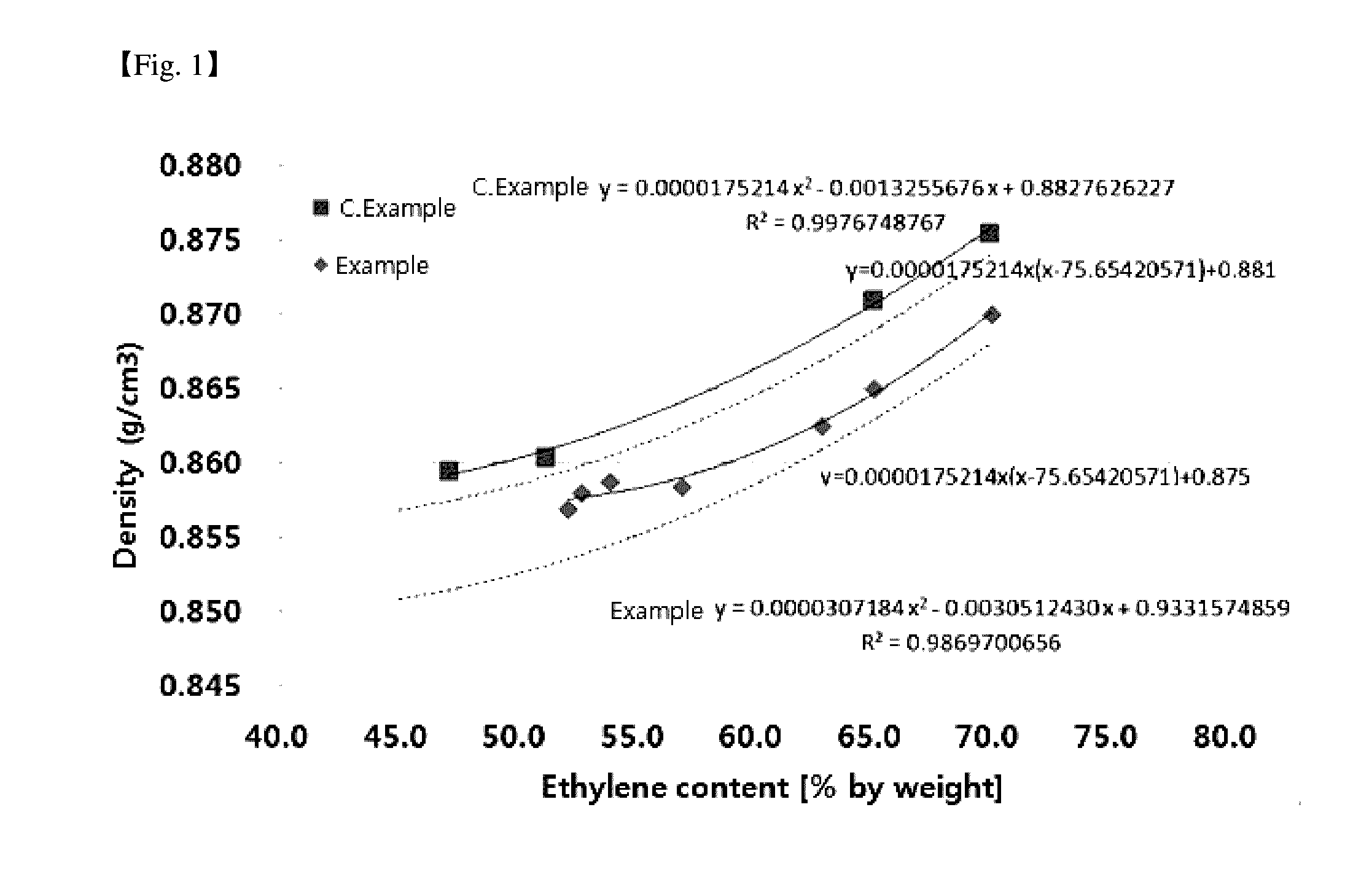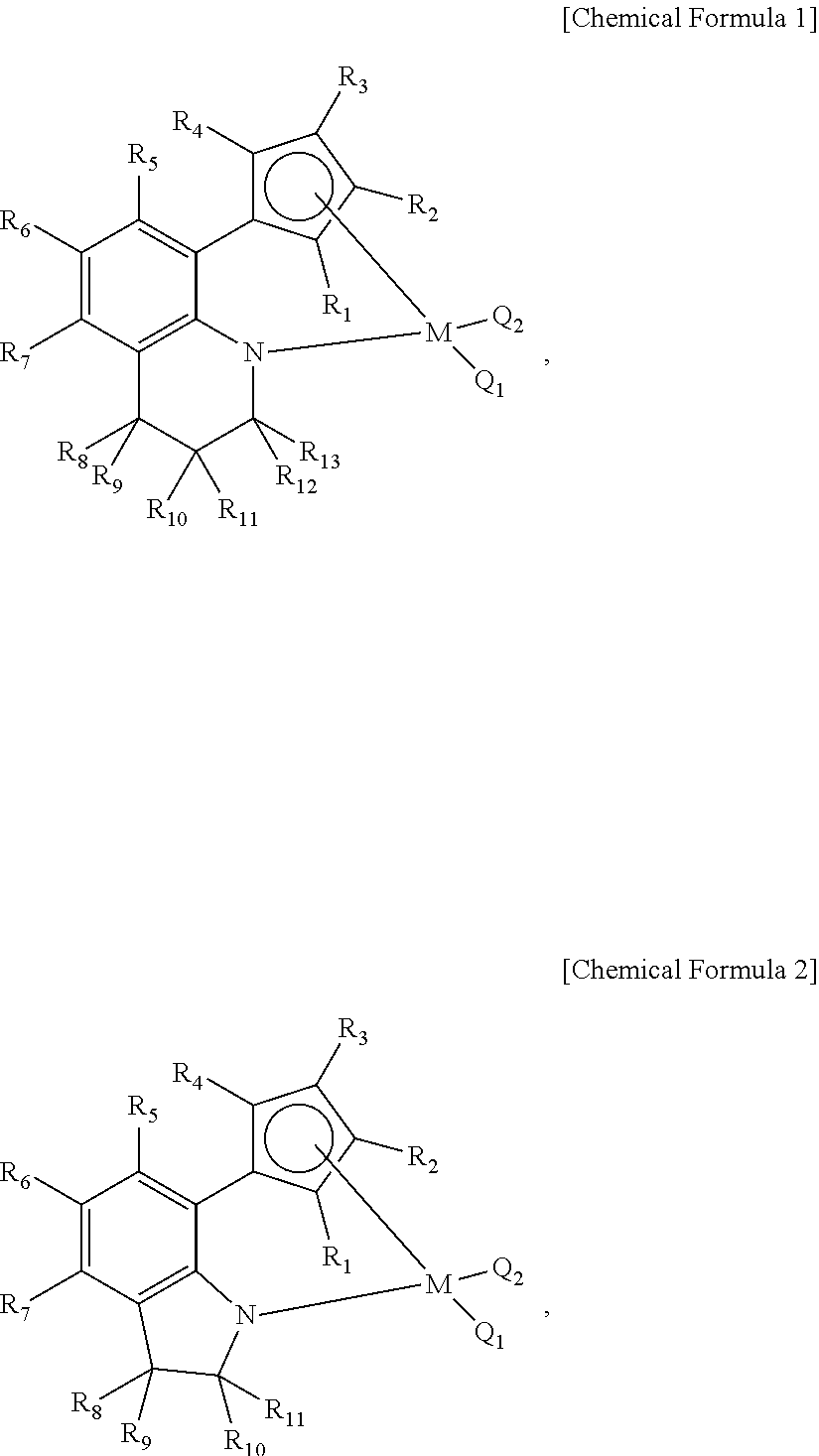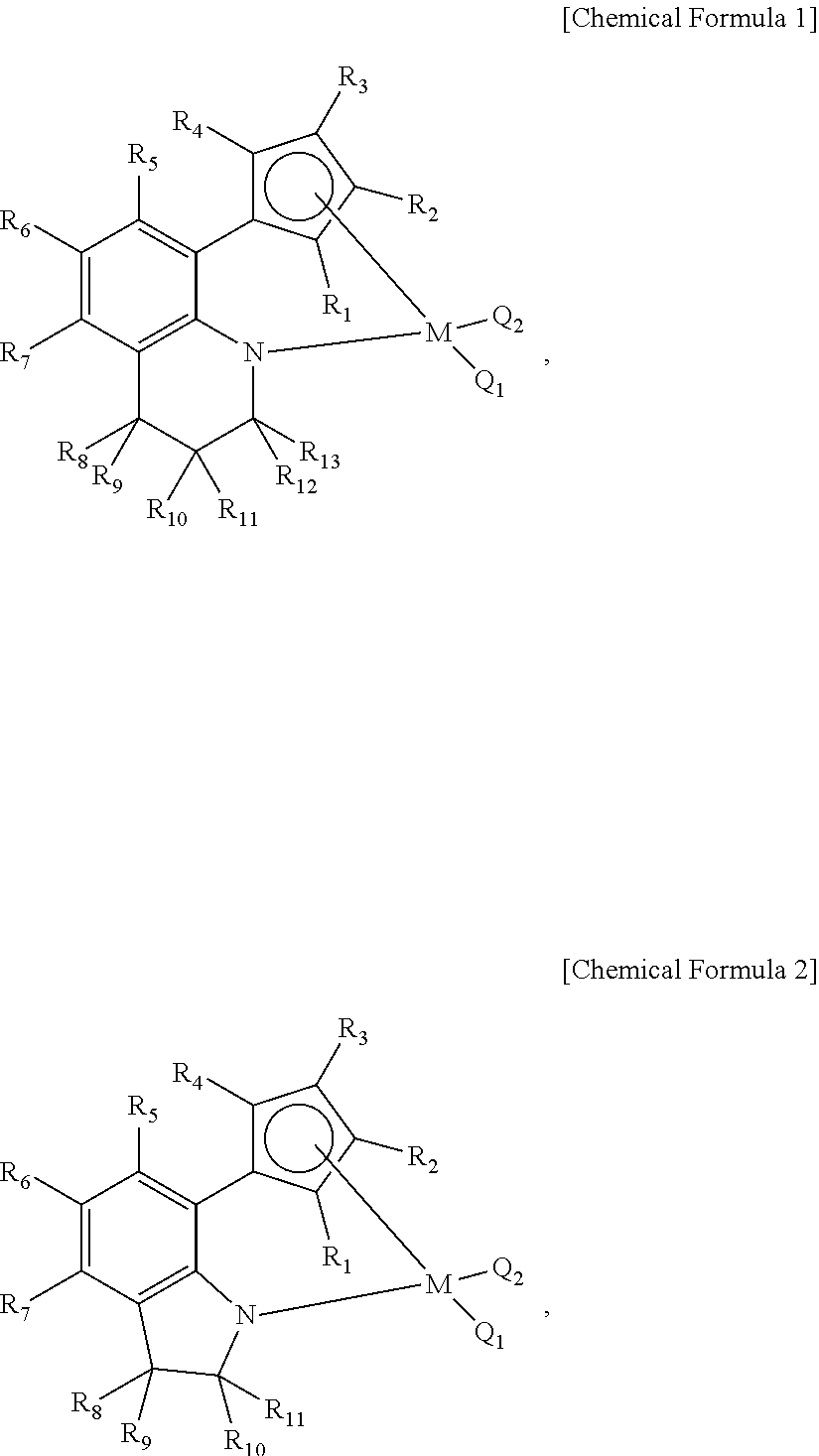Elastic diene terpolymer and preparation method thereof
a technology of elastic diene and terpolymer, which is applied in the field of elastic diene terpolymer, can solve the problems of increasing the content of metal remaining in the copolymer, affecting the vulcanization process, so as to improve elasticity and flexibility, improve vulcanization efficiency, and improve the effect of elasticity and flexibility
- Summary
- Abstract
- Description
- Claims
- Application Information
AI Technical Summary
Benefits of technology
Problems solved by technology
Method used
Image
Examples
examples 1 to 7
Preparation of Elastic Terpolymer of Ethylene, Propylene, and 5-Ethylidene-2-Norbornene
[0091]Terpolymerization of ethylene, propylene, and 5-ethylidene-2-norbornene was continuously performed using a 2 L-pressure reactor. Hexane as a polymerization solvent was continuously fed to the bottom of the reactor at a feed rate of 7.6 kg per hour, and the polymerization solution was continuously discharged from the top of the reactor.
[0092]As the first and second transition metal compounds, the above-described [(1,2,3,4-tetrahydroquinolin-8-yl)tetramethylcyclopentadienyl-eta5,kapa-N]titanium dimethyl and [(2-methylindolin-7-yl)tetramethylcyclopentadienyl-eta5,kapa-N]titanium dimethyl dissolved in hexane were used, and fed to the reactor at a rate of 51 to 54 μmol per hour. Further, as the co-catalytic compound, the above-described N,N-dimethylanilinium tetrakis(pentafluorophenyl)borate dissolved in toluene was used, and fed to the reactor at a rate of 255 to 270 μmol per hour. Further, as t...
experimental example 1
Measurement of Density, and Derivation of Relationship Between Ethylene Content and Density
[0098]Density data of the copolymers of examples and comparative examples was obtained using a density meter of METTLER TOLEDO XS 104, and the density was measured by a Hydrostatic Method of the density measurement methods according to ASTM D297. More specifically, the temperature of water was measured to obtain a density of water, and then the weight of the sample was measured in air and water, respectively. A holder was used for measuring the weight of the sample floating in water, and density was calculated by the following Equation 1.
Density [g / cm3]=D*A / {A−(B−C)} [Equation 1]
[0099]A=weight of sample in air [g]
[0100]B=weight of sample and weight of holder in water [g]
[0101]C=weight of holder in water [g]
[0102]D=density of water
[0103]The density values of the examples and comparative examples thus obtained are shown in Table 2. Data for each copolymer is presented by plotting the content of...
experimental example 2
Measurement of LCB Index
[0104]Behaviors of shear storage modulus of the copolymers obtained in the examples and comparative examples were measured using a SIS V-50 rubber process analyzer of SCARABAEUS INSTRUMENTS SYSTEMS at a predetermined temperature (125° C.) and frequency (0.2 Hz) while varying strain from 0.2% to 1250%. The measured storage modulus was converted into FT to derive 1st harmonics and 5th harmonics, and then a ratio of the 1st harmonics of storage modulus to 5th harmonics of storage modulus was calculated as the LCB Index, and shown in the following Table 2.
[0105]In this regard, when 1st harmonics and 5th harmonics of the measured storage modulus are defined as G′1 and G′5, respectively, the LCB Index can be expressed as the following Equation 2.
LCB Index=G′1 / G′5 [Equation 2]
PUM
| Property | Measurement | Unit |
|---|---|---|
| density | aaaaa | aaaaa |
| molecular weight distribution | aaaaa | aaaaa |
| temperature | aaaaa | aaaaa |
Abstract
Description
Claims
Application Information
 Login to View More
Login to View More - R&D Engineer
- R&D Manager
- IP Professional
- Industry Leading Data Capabilities
- Powerful AI technology
- Patent DNA Extraction
Browse by: Latest US Patents, China's latest patents, Technical Efficacy Thesaurus, Application Domain, Technology Topic, Popular Technical Reports.
© 2024 PatSnap. All rights reserved.Legal|Privacy policy|Modern Slavery Act Transparency Statement|Sitemap|About US| Contact US: help@patsnap.com










